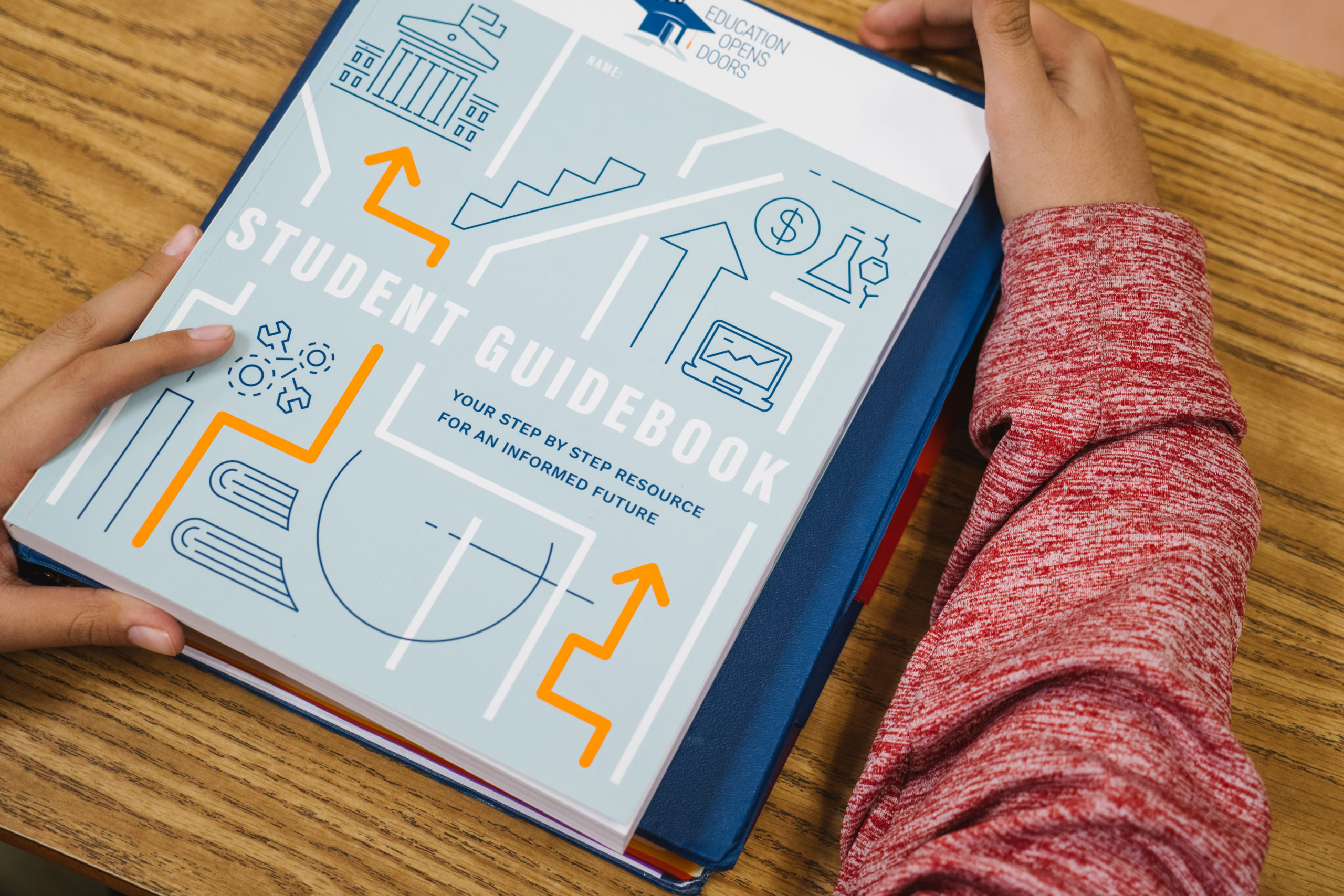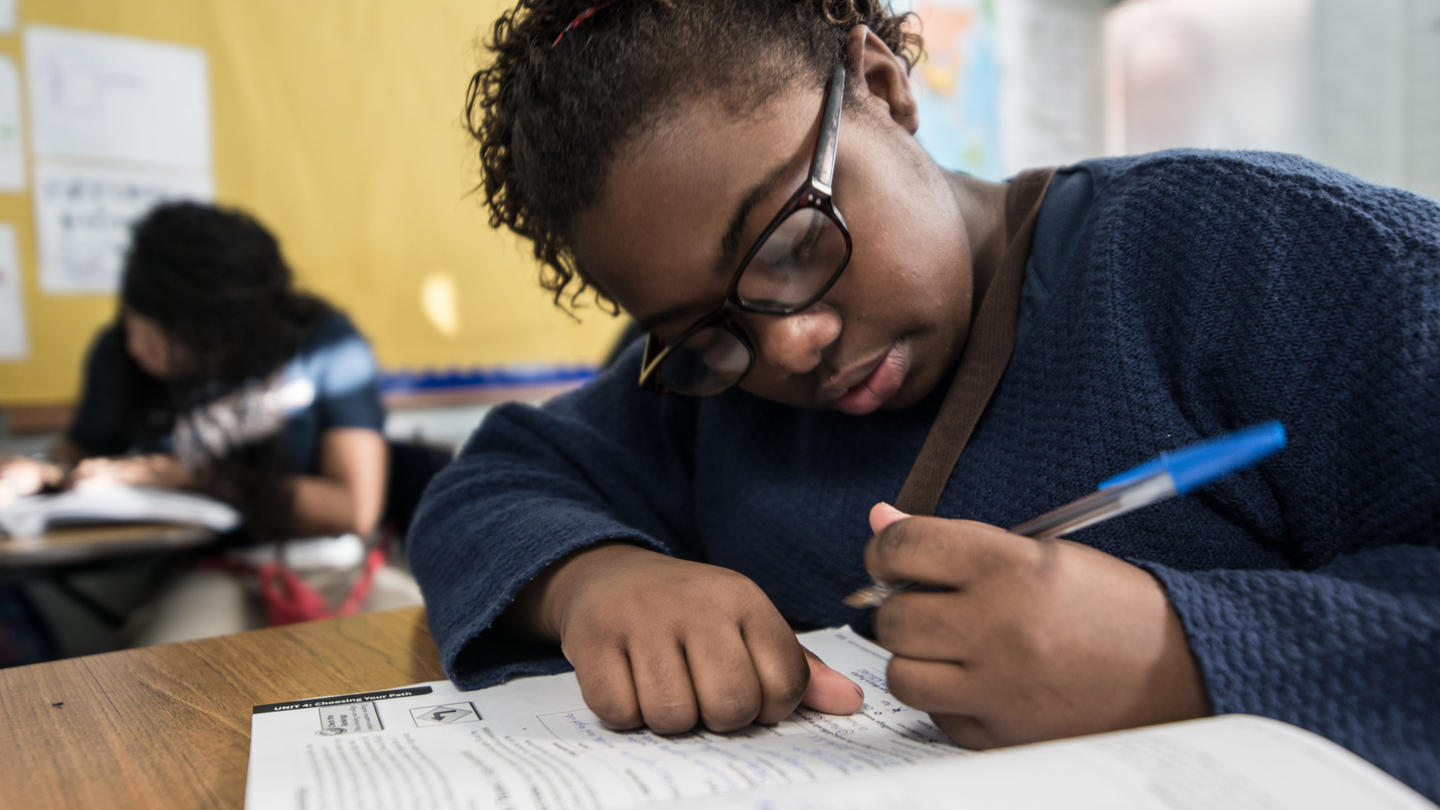One of the COVID-19 pandemic's many troubling side effects has been to bring the "digital divide" into sharp focus. When classes moved into cyberspace last spring, students with access to computers at home had a far easier time adapting to the change than those without.
Luckily, the nonprofit Education Opens Doors (EOD) had already built its programs around a book it created that's published the old-fashioned way: on paper.
Called Student Guidebook: Your Step by Step Resource for an Informed Future, the 332-page guide is divided into six units, beginning with exercises that help students identify and explore their own abilities and aptitudes. Further chapters discuss why postsecondary education matters, the importance of grades and extracurricular activities, the ins and outs of applying to college or trade school, and the many ways to pay for higher learning.
EOD's own research shows that, while 95 percent of all underserved middle school students want to continue their education beyond high school, only eight percent manage to do so. EOD aims to close that gap, with support from school districts, individual donors, and Stand Together Foundation.
For eight years, EOD's mission has been to create a culture in middle schools that encourages sixth, seventh, and eighth graders to start planning now for their next moves after high school. The program provides teachers with the content, training and technology to equip students with critical information not traditionally taught in school, like how to confidently navigate high school, set post-secondary goals, and feel fulfilled as they become adults.
"Middle school is when most kids begin to think about how their lives will be in adulthood," says Brittany Brady, EOD's director of advancement. "So we want to make them aware of their choices, whether they ultimately pursue a four-year degree, go into the military, or get trained for a skilled trade."
The number of American jobs requiring some education or credentials beyond high school is projected by the Bureau of Labor Statistics to grow by 14 percent between 2013 and 2022, while jobs calling for a high school diploma alone lag far behind.
More than 65 percent of newly created jobs already demand at least some college or other post-secondary training, according to an analysis by the Center on Education and the Workforce at Georgetown University. Many of those occupations — in fields that include information technology, manufacturing, construction, and health care — don't require a four-year college degree. But they do call for credentials beyond high school, available from community colleges, unions, sites like Coursera, and other sources.
Education Opens Doors started its work in 2013, with nine school partnerships in Texas, reaching about 1,500 students. Since then EOD has grown to 52 schools and almost 60,000 students, recently expanding into Kentucky, Missouri, and Louisiana. "We are in conversation now with potential partners in both rural and urban areas of Colorado, Tennessee, and Massachusetts," Brittany says. "Every middle school student needs access to this."
Having a printed book, rather than an e-book, as the centerpiece of EOD's efforts means access is equal for all. "This levels the playing field between students with computers at home and those without," Brittany says. "Everyone can read the guidebook and look up whatever they want to know — either at home or, as in-person learning starts up again, in the classroom."

Teachers receive special training and coaching from EOD on how to help students think about the long term, including sharing their own experiences, while EOD advisers are available to address any questions or concerns teachers or students may have.
Families are part of the equation. When the pandemic forced schools to close last spring, EOD added a wide range of resources to its website, offering support to parents, guardians, and other caregivers about helping kids prepare for the future. The organization launched a "parents' podcast" series, for instance, where anyone helping a student adjust to virtual classes could exchange advice and insights with other adults facing similar challenges. EOD plans to add even more content for caregivers to its site later this fall.
The biggest challenge for EOD when the pandemic shuttered schools, Brittany says, was keeping everyone focused on long-term education and career goals. "We reached out to teachers online first, with extra training," she says, even though future-thinking and planning "wasn't the first thing on their minds" as the world was dealing with a pandemic that shattered livelihoods. Many students were distracted too, she adds. "Some had close relatives who passed away from the virus, while others had parents or guardians who were essential workers, or who faced layoffs and food shortages."
So far, EOD's results have been remarkable. Its own research says 74 percent of teachers reported that EOD helped them build better relationships with their students, and over 90 percent saw improvements in students' engagement in their schoolwork.
A study by Southern Methodist University of more than 7,000 middle school students found that the organization's students were much more aware of their post-high school options, and markedly more likely to take college entrance exams, than their peers in schools without EOD's programs.
"Our goal is for every single student to fulfill his or her potential in life," Brittany says. "We want them to shoot for the moon." By giving kids the tools and information they need to plan ahead, EOD provides a crucial launching pad.
Learn more about Stand Together's education efforts and explore ways you can partner with us.
